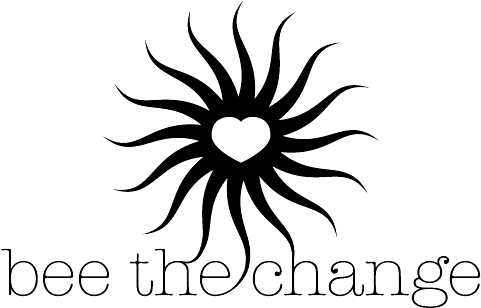Pollinator of the Month: Hoverfly
Hoverflies: Our Teeny, Tiny Pollinators
Despite their tiny size (¼ to ½ an inch) and other anatomical differences from bees including two not four wings and stubby instead of long antennae (see image above… bee on left, fly on right), hoverflies mimic the color patterns of bees and wasps to scare off predators. There are thousands of hoverfly species, all helping to pollinate, yet they don’t sting or bite, and their larvae eat garden pests including aphids and small caterpillars making them beneficial to have around your garden.
Preferred Habitat: Hoverflies are commonly seen in flowering landscapes across the world. They live in decaying wood, on plants, and sometimes in other insects’ nests when food sources are available to the larvae.
Favorite Plants: Fennel, Daisies, Queen Anne’s Lace, Alyssum, Cosmos, Lavender, Zinnias, mint, and other small, flat flowers that allow easy access to nectar.
How They Pollinate: Hoverflies are “incidental” yet crucial pollinators. The adults hover – as their name suggests – like hummingbirds over flowers to drink nectar. When their hairy bodies brush against the flower’s stigmas, pollen is transferred between the fly and flower and vice versa. Although they carry less pollen on their bodies than bees, hoverflies compensate by making a greater number of flower visits. Like bumblebees, most hoverflies are generalists and will visit many different types of plants, however their preference is thought to be for yellow and white flowers.
Superpowers: Hoverflies have the ability to “turn on” and “turn off” their reproductive capabilities based on odors present in nearby plants. The odors hoverflies seek out seem to be related to whether or not there is prey available for the larvae – aphids and other soft-bodied pests. Even in contained environments pregnant females will refuse to lay eggs on non-infested plants. The number of eggs they lay also appears to be connected to how many aphids are present on the plant the hoverfly chooses. Unlike bees and wasps, hoverflies do not supply their larvae with food, and the larvae do not feed from flowers which may explain this unique egg-laying process.
How You Can Help: Hoverflies have stronger populations in places where people plant for all types of pollinators, from butterflies to bees and birds. This helps to build an ecosystem with natural predators and prey for the garden’s inhabitants, and limits the need for insecticides and other harmful pesticides. Cultivating an array of flowering plants will ensure that nectar and pollen are available to pollinators throughout the growing season. You can also try planting different crops in proximity (companion planting) to increase pollination and productivity, while also providing unique habitat for beneficial creatures, including hoverflies.
To Learn More:
“Hoverflies and Other Flies” – The Pollinator Garden
“Undeniably Interesting Facts about Hoverflies” – AnimalSake
“Flower Flies” – USDA Forest Service


